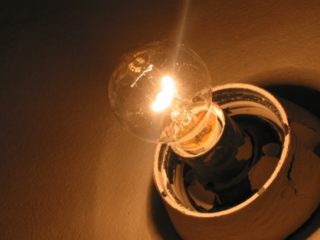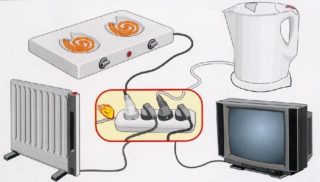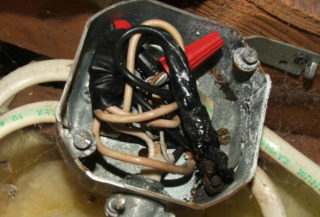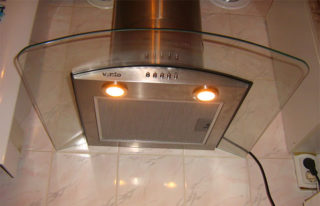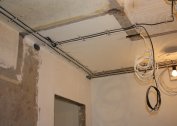The blinking of light in an apartment or a country house is a fairly common problem. It is caused by unstable voltage. Once faced with such trouble, you need to find out the root cause as soon as possible. This is due to the fact that problems with electricity lead to the failure of expensive household appliances and electrical appliances, and also cause a short circuit leading to fire.
The light in the apartment blinks: reasons
There are different types of flicker and ways to eliminate them. First of all, you need to find out the root cause of the unpleasant phenomenon and find the problem place. If the lighting flickers in only one room, the reasons lie most often in the junction box located indoors. It is not recommended to repair it yourself, a qualified specialist will speed up the repair process and make it qualitatively.
If the lighting flickers throughout the apartment, watch the light on the stairwell and ask the neighbors if they noticed something like that. If not, the reason lies in the switchboard.
Light flashes throughout the room
If the lighting flickers throughout the apartment, as well as at the neighbors and in the entrance, the services that serve the house should fix the problem.
Why is the light blinking:
- The most common reason is overloading the electricity network. This is observed if in several apartments the owners use powerful household appliances, for example, heaters, air conditioners.
- The house uses powerful household appliances and electrical appliances, but the wiring is outdated and has not changed since the Soviet Union. Decades ago, the number of appliances in homes could be counted on the fingers. The solution to the problem is a complete wiring replacement or additional installation of a step-down transformer.
- Flickering can be caused by a scheduled repair at the entrance. Often, repairs are accompanied by the use of a rotary hammer, drill, welding machine, and other devices that consume large amounts of electricity.
In the latter case, it is better to observe the phenomenon. If the flicker has stopped with the end of work, there is no reason for worry. If the blinking of the lighting does not stop, they seek and fix the malfunction.
Separate lights blink
If during the inspection it was revealed that only one light was flickering in a separate room or lighting device, the elimination of breakage would be completely different.
- Typically, a flickering lamp indicates that it is time to replace it with a new one.
- There are cases when a new bulb flickers. A defective item may have been purchased.
- The reason may lie in a faulty switch. It is necessary to observe how he “behaves”. Defective electrical appliances often emit abnormal noises, such as crackles.
A common cause of flicker is dirt and dust getting on metal conductors in switches or the lighting fixture itself. You can solve the problem yourself, just clean the contacts.
What to do with faulty wiring
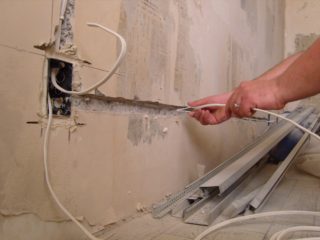
If after all possible manipulations with the switch and the bulbs the light continues to flicker, most likely, poor-quality electrical wiring is carried out in his house. To verify this will help visual inspection of the distribution panel, in particular the wiring line that powers the lighting fixtures. It is important to carefully check the contact connections in the distribution box itself. Typically, such problems arise due to the violation of the integrity of the conductors or when using aluminum wiring, which has low resistance and strength.
The solution in this case is one - replacing the damaged area or all the wiring in the apartment.
The services that provide and service the house must be responsible for the quality and reliability of the services provided, as well as maintain tension within acceptable limits. At home, the optimal range ranges from 210-230 V.
However, unstable tension is not always the result of poor-quality services. The source of the problem can be residents of the house, which include a large number of powerful appliances. Also, differences are observed when starting devices equipped with electric motors. When reversing and starting, there is a subsidence of the network.
Household appliances and lighting
Lighting is built into some lighting fixtures: cooker hoods, ovens, microwave ovens. Flickering in them is sometimes a confirmation of the malfunctioning of a household appliance. To establish the cause, examine the cable in the distribution panel that powers the specific device. If all other household appliances are working properly, there were no defects in the wiring, the reason lies in the device itself.
You must immediately disconnect the device from the voltage. You should try replacing the light bulb in it and checking the contacts, maybe they have oxidized and become dirty.
It is strictly forbidden to work with any household appliances without special protective equipment and tools. You can only use the standard controls without disassembling the devices. If a person does not have the skills of an electrician, it is better to contact a qualified specialist. Electroshock does not warn about itself in advance, and the consequences can be dire.
